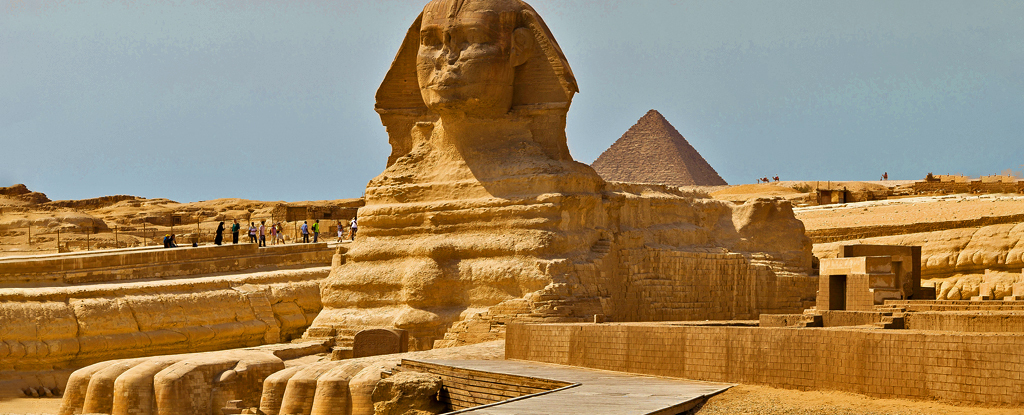Before ancient Egyptians refined the Great Sphinx of Giza, natural forces may have helped carve the iconic monument’s massive feline shape out of a single mass of limestone.
Fluid dynamics experiments reveal the structure’s ‘reclined lion’ shape could have been carved not by human hands, but fast-flowing wind.
“Our findings offer a possible ‘origin story’ for how Sphinx-like formations can come about from erosion,” says experimental physicist and applied mathematician Leif Ristroph from New York University.
“Our laboratory experiments showed that surprisingly Sphinx-like shapes can, in fact, come from materials being eroded by fast flows.”
Speculation over nature’s hand in carving the Sphinx isn’t new. As far back as the 1950s, it’s been suggested the statue’s body may have been weathered by ancient waters.
…
The resulting shapes resemble yardangs, contorted hunks of stone seen in many desert regions where winds scoop up sands to hurl at every obstacle. Eventually, this sandblasting can shape even the hardest and most massive rock formations into convoluted structures.
“There are, in fact, yardangs in existence today that look like seated or lying animals, lending support to our conclusions,” says Ristroph.



Maybe it was on the History channel so could have been unfinished research and premature reporting from them.
That’s possible. It’s been a long time ago and I can’t find the documentary now.